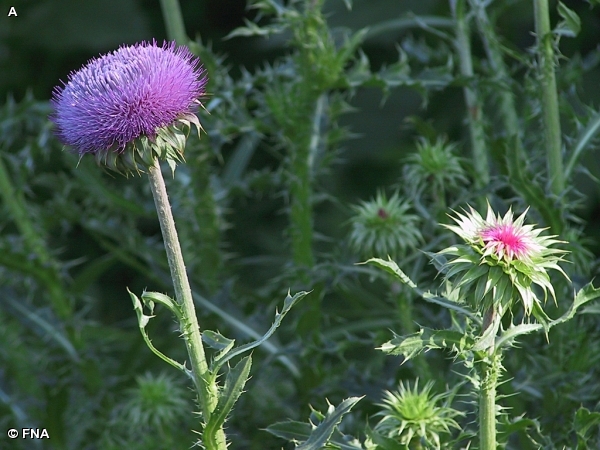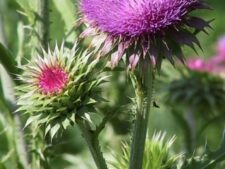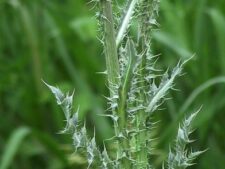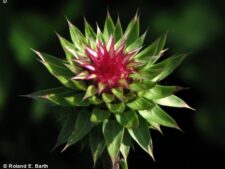
This naturalized biennial was introduced from Eurasia. The first year a rosette of spiny leaves grows close to the ground. The second year a stout, long, erect flowering stem grows to 3- 6 feet or taller (A,B). Leaves have wavy, deeply lobed margins armed with sharp spines. Spiny, wing-like extensions of the leaf bases downward along the stem are responsible for its spiny appearance (C). Purple heads containing upwards of 100 disk florets are up to 2 inches or more across ; they nod when mature. Directly beneath the flower head are many layers of lance-shaped bracts which often turn purple at maturity (B,D). Attached to each seed are plumes of fluffy white hairs enabling its dispersal by the wind.
Grows along roads and open disturbed areas, flowering from late May into August. Uncommon in disturbed sites at both Fontenelle Forest and Neale Woods. An occasional one also pops up in the Neale Woods prairie restorations.
Of the thistles found in our nature centers, this ferociously spiny one is the first to bloom. It is considered a noxious weed in Nebraska.
As the flower matures the heads often nod, a feature responsible for its alternate common name, Nodding Thistle.
The content of NatureSearch is provided by dedicated volunteer Naturalists of Fontenelle Forest who strive to provide the most accurate information available. Contributors of the images retain their copyrights. The point of contact for this page is: Roland Barth.

 Identification
Identification

